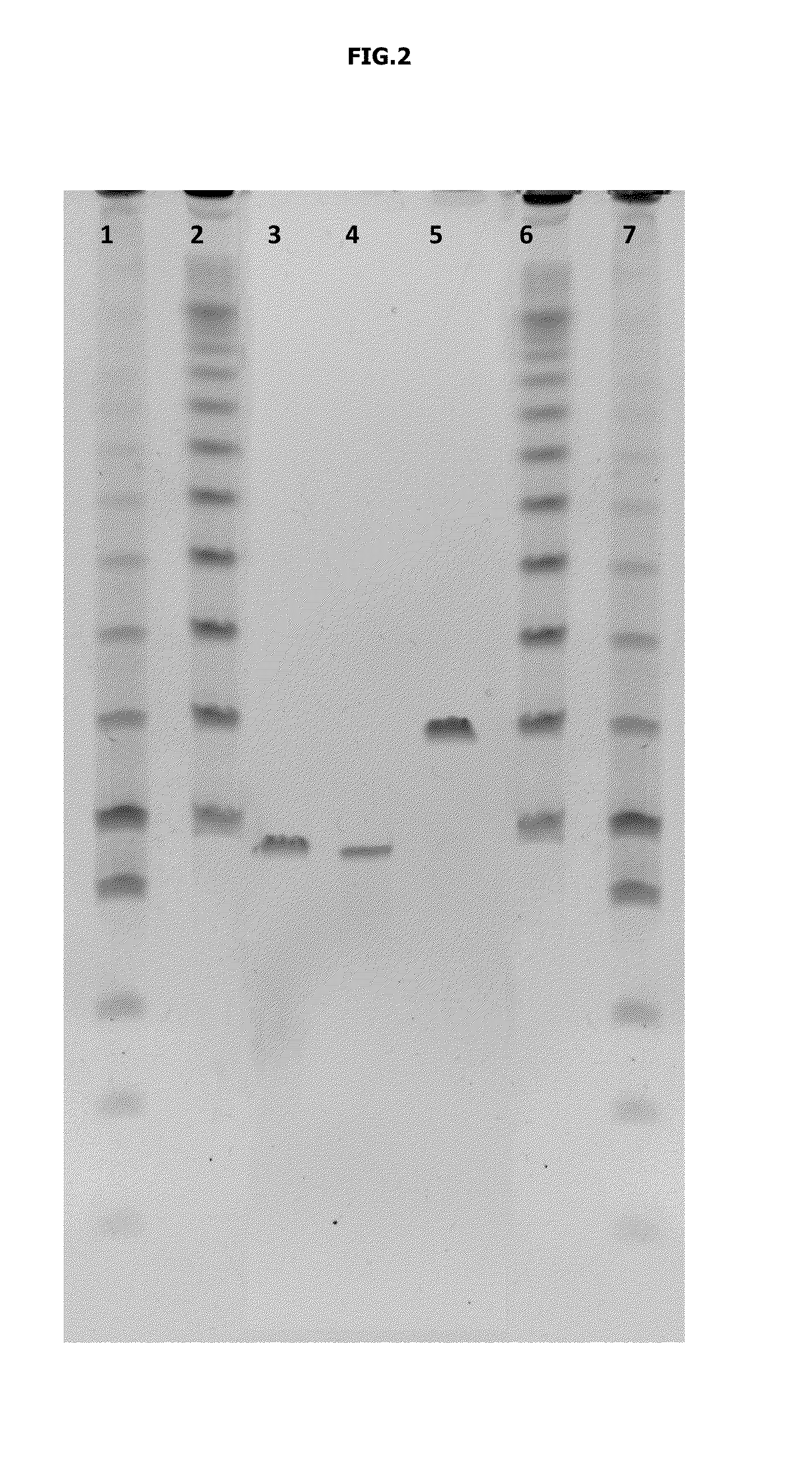Novel salmonella bacteriophage compositions and uses thereof
a technology of bacteriophage and composition, applied in the field of new bacteriophage composition and bacteriophage cocktail, can solve the problems of authors' doubts about its long-term effectiveness
- Summary
- Abstract
- Description
- Claims
- Application Information
AI Technical Summary
Benefits of technology
Problems solved by technology
Method used
Image
Examples
example 1
Bacterial Strains and Growth Conditions
[0147]Clonally unrelated strains of Salmonella enterica serovar Typhimurium and Salmonella enterica serovar Enteritidis, respectively, were used to isolate Salmonella's phages and to determine the host range assays of the isolated phages (FIG. 7). These bacterial strains were obtained from the Laboratori de Sanitat Animal (DARP, Generalitat de Catalunya, Spain) and from the Hospital Vall d'Hebrón and the Hospital de Sant Pau (Barcelona, Spain). They were selected to present different pulsotypes as determined by Pulse Field Gel Electrophoresis method.
[0148]The virulent strains S. Typhimurium ATCC14028 (American Type Culture Collection) and S. Enteritidis LK5 (Salmonella Genetic Stock Centre, University of Calgary) were also used for the isolation of Salmonella's phages. In addition and using the red recombinase system (Datsenko and Wanner, 2000), the ATCC14028 and LK5 virulent strains were respectively marked with a chloramphenicol and kanamycin...
example 2
Isolation and Propagation of Bacteriophages
[0151]Samples (n=161) of cloacae or rectal swabs from broilers and from pigs, respectively, were taken from farms of different geographical areas of Spain from 2007 to 2009.
[0152]Bacteriophages were isolated as described (Connerton et al., 2004; Muniesa et al., 2005) or by an enrichment procedure. Briefly, 1 g of the sample was diluted in 10 ml of SM buffer (50 mM Tris-HCl [pH 7.5], 0.1 M NaCl, 8 mM MgSO4·7 H2O, 0.01% gelatin) and incubated at 4° C. for 24 h. Then each suspension was subjected to centrifugation at 7000×g for 10 min. For the enrichment procedure 1 g of the sample was diluted in 10 ml of peptone water and incubated at 37° C. for 18 h. After then, 1 ml of the enrichment culture was inoculated in 10 ml of Müller-Kauffmann selective broth and incubated at 37° C. for 24h. Following, each culture was subjected to centrifugation at 7000×g for 10 min.
[0153]The supernatants obtained from both methods were filtered through a 0.45 μm s...
example 3
Selection of Bacteriophages
[0155]The host range of each bacteriophage lysate was determined by spotting 10 μl of the lysate (108 pfu / ml) onto lawns of 76 strains of Salmonella. Plates were incubated at 37° C. for 24 h and bacterial lysis was recorded. Bacteriophages selected infect to the serovars Hadar, Infantis and Virchow and a wide range of strains belonging to the serovars Typhimurium and Enteritidis (FIG. 8).
In addition, DNA restriction profiles of the phage selected were also determined. To achieve this, a purified phage suspension was treated with DNase I (20 μg / ml) and RNase I (25 μg / ml) at 37° C. for 1 h. Hereafter, proteinase K (0.2 mg / ml) and sodium dodecyl sulfate (0.5%) were added and incubated for 1 h at 56° C. Following incubation, the DNA was purified by conventional phenol-chloroform-isoamyl alcohol extraction. The genomic DNA was precipitated in 2 volumes of ethanol with 3 M sodium acetate, pH 4.8. The pellet obtained was washed with 70% ethanol, dried, and resusp...
PUM
 Login to View More
Login to View More Abstract
Description
Claims
Application Information
 Login to View More
Login to View More - R&D
- Intellectual Property
- Life Sciences
- Materials
- Tech Scout
- Unparalleled Data Quality
- Higher Quality Content
- 60% Fewer Hallucinations
Browse by: Latest US Patents, China's latest patents, Technical Efficacy Thesaurus, Application Domain, Technology Topic, Popular Technical Reports.
© 2025 PatSnap. All rights reserved.Legal|Privacy policy|Modern Slavery Act Transparency Statement|Sitemap|About US| Contact US: help@patsnap.com



